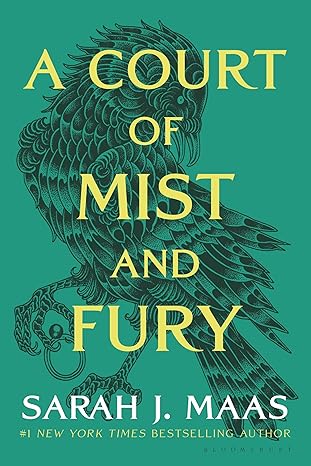
Understanding Fear and Love in Storytelling

Writing is a deeply personal and often vulnerable process. In exploring the intricate relationship between fear and love in storytelling, we uncover essential truths that resonate universally. Let’s delve into how these elements can shape characters and narratives, making them compelling and relatable.
Table of Contents
- The Role of Fear in Writing
- Accessing Your Fears
- The Pot of Gold: Universal Fears
- Transforming Fear into Growth
- Love: The Core of Every Story
- From Tragedy to Triumph
- Writing with Authenticity
- Conclusion
- FAQ
The Role of Fear in Writing
Fear is a common thread in the lives of writers. It often manifests as anxiety about the work itself—questions like “Is this going to work?” or “Does this make sense?” can plague the creative process. Acknowledging these fears is crucial, as they can either hinder or enhance the writing experience.

To combat these fears, many writers advocate for rapid first drafts. Stephen King, for instance, emphasizes the importance of completing a first draft quickly to avoid overthinking. He suggests a timeframe of around three months, allowing enough time to flesh out the story without getting lost in self-doubt or logical reasoning.
Accessing Your Fears
Connecting with our fears doesn’t have to be a daunting task. In fact, many writers find it easy to access these emotions. A useful exercise is to write down your fears, making them conscious. This practice can illuminate how these fears reflect in your characters and narratives.

When we confront our fears, we tap into a reservoir of truth and vulnerability. This connection allows us to create characters that resonate on a deeper level with readers. If a writer feels judged or fears being perceived as ‘weird,’ these sentiments can be reflected in their protagonist’s struggles, making the story more authentic.
The Pot of Gold: Universal Fears
Writers often express reluctance to include personal fears in their stories. However, it’s essential to recognize that fears are universal. They transcend individual experiences and can be woven into the fabric of any narrative. By exploring the nature of fear rather than specific phobias, writers can create relatable characters.

For example, if a writer fears judgment from others, their protagonist might grapple with similar anxieties. This shared experience fosters a connection between the reader and the character, enriching the narrative’s emotional depth.
Transforming Fear into Growth
Writing is not just about confronting fears; it is also about evolving through them. The act of writing often serves as a means to resolve internal conflicts and limiting beliefs. This journey can lead to profound personal growth for both the writer and their characters.

As writers navigate their fears, they may find that their stories invite them to let go of harmful beliefs. For instance, the fear of rejection may transform into a realization that self-worth is not contingent upon external approval. This transformation can be mirrored in the character’s arc, showcasing their journey toward self-acceptance.
Love: The Core of Every Story
At the heart of every narrative lies love—not just romantic or familial love, but self-love. The exploration of love provides a rich backdrop for character development and conflict resolution. Every story ultimately revolves around whether the protagonist can open their heart and embrace their true self.

Whether the narrative leads to triumph or tragedy, the theme of self-love is ever-present. Characters may face challenges that require them to confront their fears, leading to moments of profound realization and growth. This journey resonates deeply with audiences, as we all grapple with similar struggles in our lives.
From Tragedy to Triumph
Consider how different stories portray love and its consequences. In one narrative, a character’s self-love may lead to fulfilling relationships and personal success, while in another, a lack of self-love results in tragedy. Both outcomes serve to highlight the critical importance of self-acceptance and the willingness to connect with others.

For instance, in stories like “The Sound of Music,” the characters’ love for themselves and each other drives them toward happiness. Conversely, in narratives like “Leaving Las Vegas,” the absence of self-love leads to despair. These contrasting outcomes illustrate that love’s presence or absence shapes the essence of the story.
Writing with Authenticity
To write authentically, one must embrace the complexities of human emotion. This involves acknowledging both fear and love, allowing them to inform character development and narrative arcs. By doing so, writers can craft stories that resonate on a fundamental level, connecting with readers through shared human experiences.

Writers should not shy away from their vulnerabilities. Instead, they should lean into them, using their experiences to create characters that reflect the multifaceted nature of humanity. This authenticity fosters empathy and understanding, making the story relatable and impactful.
Conclusion
In summary, the interplay between fear and love in storytelling is a powerful dynamic. By confronting their fears and embracing love, writers can create narratives that resonate deeply with readers. Every story, at its core, is a reflection of the human experience, highlighting the importance of self-love and connection with others.

FAQ
What is the significance of fear in writing?
Fear plays a crucial role in writing as it encourages writers to tap into their vulnerabilities, creating authentic characters and relatable narratives.
How can I confront my fears while writing?
Writers can confront their fears by engaging in exercises that make them conscious of these emotions, such as writing them down or exploring their impact on character development.
Why is love a central theme in storytelling?
Love, particularly self-love, is fundamental in storytelling as it drives character arcs and conflicts, ultimately leading to meaningful resolutions.
How can I write more authentically?
To write authentically, embrace your vulnerabilities and allow your personal experiences to inform your characters and narratives, fostering empathy and connection with readers.


















